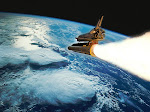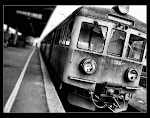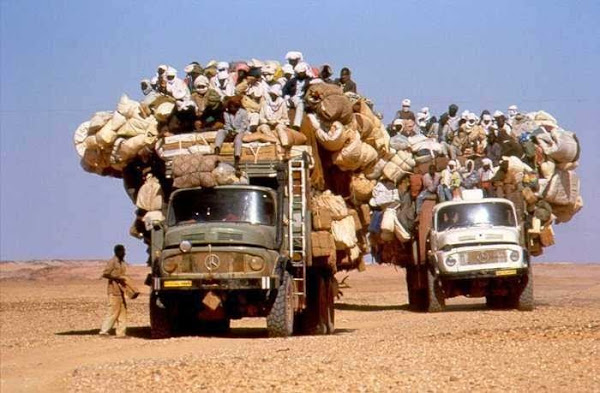Overall, global changes in travel have been relatively small, as compared to how long people have been traveling. Typically, new technology is produced, and then is expanded upon to make the original machine faster, stronger, or more luxurious. Technology, economics, and other factors have contributed to the way that people travel from country to country and year to year. Generally, people tend to travel more when they have the mode to travel, the means, and the technology.
Technology is the only reason people can travel across large territories. It is the “steady [movements] in technology and reductions in cost [that enable] unprecedented gains in mobility” (Schäfer). An example of this would be the first automobile in America, because only the rich had the ability to purchase the vehicle when it was first produced. Soon, more families were able to purchase their first or second car, as the price of the vehicle declined. Likewise, as faster forms of transportation are invented, the slower versions become cheaper, and available to a higher percentage of the global population.
However, travel is not just used for business; but also for pleasure. In fact, “much wealthier residents in automobile-dependent societies such as Japan, Western Europe, and the United States- where half of the trips are leisure oriented—spend a similar amount of time en route” (Schäfer). Debbie Hodson lives in the United States, and doesn’t recall taking leisurely rides in vehicles since the age of five. Miss Hodson knows she hasn’t taken leisurely rides because the price of taking scenic trips is too high. The family car might be used on leisure trips when Debbie’s parents use the car for family vacation; instead of another mode of transportation.
Third world countries would not have the means to take leisurely trips. The only travel the people in poorer countries typically participate in would be to travel to move location or to travel a smaller distance. Traveling to relocate the family is not a new development. Globally, citizens from different countries have traveled for centuries so that they may be safe in a new territory. These individuals typically flee from tyrant rulers, escape imprisonment, or to move to avoid unfortunate circumstances and probable death. These are just a few of the many reasons that poorer people would travel greater distances. An example of this would be travel by ship. Just like today, the top part of the ship is reserved for the richer passengers, and the bottom of the ship is for the poorer people and the crew. But in the past, it was very likely that the richer passengers would be traveling for leisure; and the poorer passengers staying at the bottom of the ship would be traveling in order to start a new life in a different region.
Trains, like ships, have played a very important role in how travel has changed globally. In the United States alone, families were traveling on horseback and buggy in order to settle on the west coast. The development of trains revolutionized how people could travel long distances. Today, trains are used most often used for moving product than people because there are faster ways for individuals to travel. But, public transportation by train is still offered in many areas of the world.
Economics also plays an important role in global changes in travel, because “neither economic ups and downs nor changes in fuel price have fundamentally changed this relationship over long periods. To travel more within a stable time budget, people shift to faster modes of transport, to motor scooters and public transport in poorer places or to airplanes and high-speed trains in richer ones” (Schäfer). Therefore, richer individuals typically use faster modes of transportation such as airplanes, whilst poorer individuals must use slower transportation methods. Being lower in economic status hinders individuals because a slower pace could lead to less progress and therefore, less distance traveled.
In Highly populated areas, more transportation is needed just to accommodate daily local transport. Highly developed countries could have “passenger mobility [increased] to levels three to six times those in 2005” (Schäfer). Much of this increase in transportation would affect city buses, vehicles, commuter railways, and other city transportation. And because population size is very important in how much local transportation is needed, the cities with the highest populations tend to have more public transit. If this were not the case, large portions of the population would be unable to reach their daily destinations. Lack of transportation could ultimately affect people’s lifestyle, job, and communication system. This is also why some of the largest cities in the world have the greatest amount of public transportation available. New York City, Chicago, and several other major cities in the United States have underground transportation as well as ground transportation in order to meet the needs of all the people moving through the city. But in areas around the globe that are not densely populated, transportation could be left up to the individual because the government may not have enough funds to have a large amount of public transportation.
Industrialized nations have recently felt that “personal travel has been consumers' appetite for improved safety, comfort and engine power” (Schäfer). Commercial, after car commercial portrays one car as being the fastest, most luxurious, and safest of all others. Especially since transportation has become more advanced technologically, people seemingly want to have the best family vehicle that they can, both as a sign of power, and of wealth. The United States is known for their citizens wanting luxury vehicles. Likewise, Europe and now parts of Asia are producing cars that they hope the world will want to drive. And one of the main reasons individuals can afford the extravagant vehicles; is that in “1967, the average U.S. household needed to work 21 weeks to afford a new car. Today, the period has shrunk to 17 weeks, despite the significant enhancement of vehicles” (Schäfer). Therefore, many households have the will and the means to own luxury transportation vehicles because people need to travel greater distances than they once did and the prices of these vehicles tend to decline.
Type of transportation is also very important to the traveling system, and can vary around the world. The last example in the former paragraph was of individuals in rural areas, which might need to walk everywhere to travel. In contrast, most people in “North [America] would still spend most of their travel time in cars, roughly 45 minutes per day. The remainder of their travel time budget would be spent in low-speed public transportation modes and increasingly high-speed transportation systems” (Schäfer). For many in California, a 45-minute travel time could be a very low estimate, because of traffic.
Traffic is well known in urbanized cities, where there are many individuals trying to travel at the same time. Smaller cities, or rural areas do not have the same traffic patterns that larger, more densely populated areas do, because rural areas do not have a big enough population to cause traffic. Other areas of the world only have traffic during certain times of day. Such as Los Angeles, which is known for having traffic around eight in the morning and five in the evening, on weeknights.
Costs can also play a huge factor in how the globe travels, because “costs will influence whether technological upgrades penetrate the world’s vehicle fleets. New technologies can be expensive” (Schäfer). Therefore, just as more vehicles can create traffic in cities. The traffic will never exist if the people in the area do not have the funds to own the vehicles. Unindustrialized countries don’t have traffic because they don’t have the means of public transportation that industrialized countries have. However, even unindustrialized countries have ways of traveling from location to location.
Individuals are not the only one’s affected by costs. Businesses like “Cisco, Intel, Hewlett-Packard, and AOL Time Warner are just a few of the companies that have cut their travel and entertainment budgets in 2001. Rolfe Shellenberger, a senior consultant at travel consulting Runzheimer International, says corporate travel budgets have been slashed an average of 25%, and up to 50% in some cases, over the past year” (Boyle). When businesses do not have enough for employees to travel, then they can ultimately end up hurting themselves because the business may not be able to expand the way that it could if it’s trade and resources are broadened. Travel time for employees might also be beneficial because “many employees view travel and entertainment as the one outlet where they can get back some of what they feel they are entitled to” (Boyle) and individuals can widen their skills and learn new customs, that might be needed for the business. For instance, Mercedes-Benz cars used to have a low commercial rating in the United States, because of the way the commercials were portraying their cars. Years later, after research on how United States consumers and their vehicles, Mercedes-Benz was able to successfully change their commercials and have higher sales in the United States. If Mercedes-Benz did not travel to the United States and elsewhere for this study, perhaps their sales rates would continue to be low in the United States and other countries.
Overall, globalization is not a new process. It is an acceleration of changes induced by the post-industrial revolution in transport and communication” (Richmond). These changes occur around the globe, and are noticeable over longer periods of time. Some social classes may have access to these new changes faster than others, but eventually, most are able to participate in the form of travel that they need in order to reach their destination. Technology, economics, and other factors have contributed to the changes that vary from country to country and year to year. And, generally, people tend to travel more when they have the mode to travel, the means, and the technology.
Works Cited
Boyle, Matthew
2001 Expensing it: guilty as charged. Fortune 179-182.
Richmond, Anthony
2002 Globalization: Implications for immigrants and refugees. Ethnic & Racial
Studies 5:707-727.
Schäfer, Andreas, with Henry Jacoby and John Heywood and Ian Waitz
2009 The Other Climate Threat: Transportation. American Scientist 97: 476-483.












